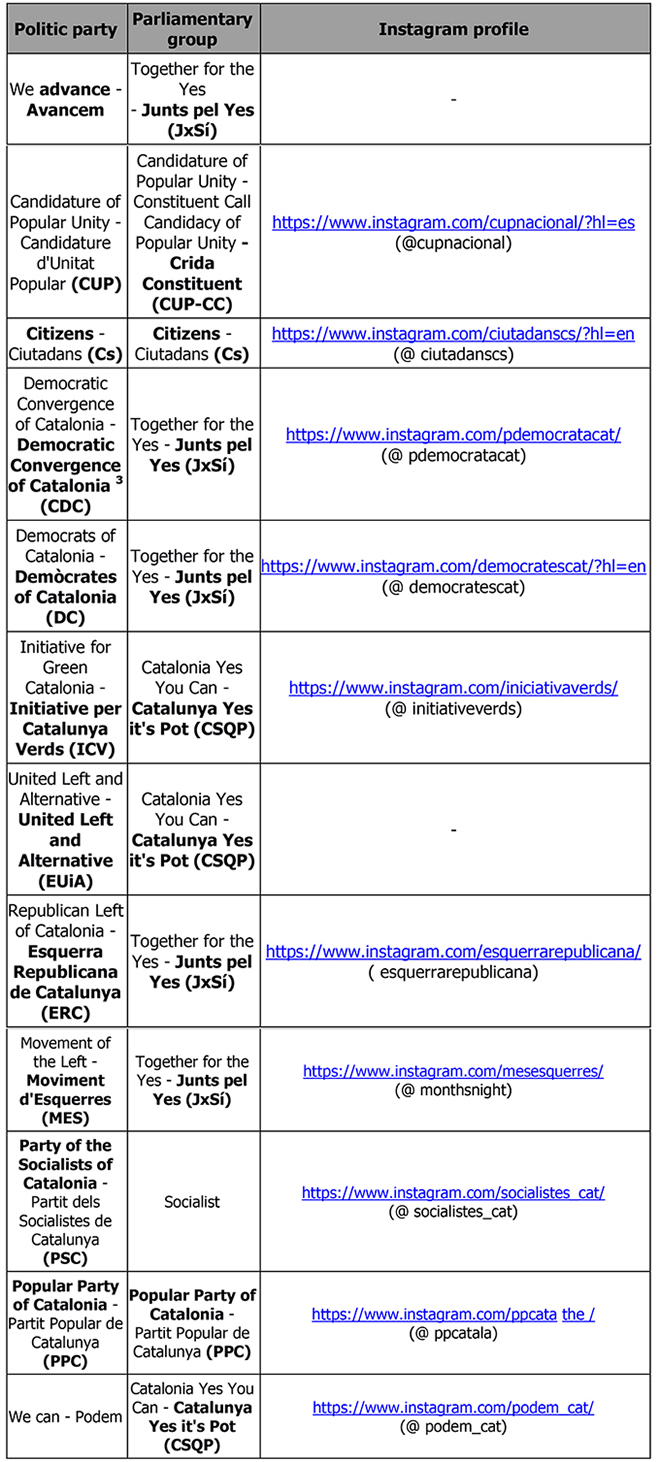
10.15198/seeci.2018.47.17-36
RESEARCH
THE USE OF INSTAGRAM BY THE CATALAN POLITICAL PARTIES DURING THE REFERENDUM OF 1 OCTOBER
EL USO DE INSTAGRAM POR LOS PARTIDOS POLÍTICOS CATALANES DURANTE EL REFERÉNDUM DEL 1-O
O USO DO INSTAGRAM PELOS PARTIDOS POLÍTICOS CATALÃES DURANTE O REFERENDO DE 01/10/2017
Manuel-Jesús Cartes-Barroso1 Professor at the European University Miguel de Cervantes. He belongs to the Analysis and Information Technology Research Team (University of Seville).
1European University Miguel de Cervantes. Spain
ABSTRACT
Instagram is one of the fashionable social networks of the moment. In the new digital ecosystem, associations, companies and organizations have begun to understand the benefits of having a presence in this social network, including those belonging to the field of politics, as in the case of political parties. In Spain, concretely, its use emerges at present, the communication that the Catalan groups developed through Instagram when holding the referendum of independence of this autonomous community, on October 1, 2017 being a clear example of this situation. Due to the media importance and the wide dissemination given to this event in social networks, this article aims to analyze the use that the political groups represented in the Parliament of Catalonia made of the social network developed by Kevin Systrom and Mike Krieger, to know the degree of importance it has in the political sphere. The methodology we applied is content analysis, in its qualitative and quantitative aspects. Among the main conclusions, we can affirm that political parties do not use all the possibilities of this social network. And, on the other hand, that the separatist groups and followers of their Instagram accounts are the most active ones during the analyzed period.
KEY WORDS: Political communication; Social networks; Instagram; Political parties; Catalonia; Independence referendum; Spain
RESUMEN
Instagram es una de las redes sociales de moda del momento. En el nuevo ecosistema digital, las asociaciones, las empresas y las organizaciones han comenzado a comprender el provecho de tener presencia en esta red social, entre ellas las pertenecientes al ámbito de la política, como es el caso de los partidos políticos. En España, concretamente, su empleo emerge en la actualidad, siendo un claro ejemplo de esta situación la comunicación que desarrollaron las formaciones catalanas a través de Instagram, durante la celebración del referéndum de independencia de esta comunidad autónoma, el 1 de octubre de 2017. Por la importancia mediática y la amplia difusión dada en las redes sociales a este evento, el presente artículo tiene como objetivo analizar el uso que las formaciones políticas con representación en el Parlamento de Cataluña dieron a la red social desarrollada por Kevin Systrom y Mike Krieger, para conocer el grado de importancia que tiene en el ámbito político. La metodología que aplicamos es el análisis de contenido, en sus vertientes cualitativa y cuantitativa. Entre las conclusiones principales, podemos afirmar que los partidos políticos no utilizan todas las posibilidades de esta red social. Y, por otro lado, que las formaciones independentistas y los seguidores de sus cuentas en Instagram son los más activos durante el periodo analizado.
PALABRAS CLAVE: Comunicación política; Redes sociales; Instagram; Partidos políticos; Cataluña; Referéndum de independencia; España
RESUME
Instagram é uma das redes sociais de moda no momento. No novo ecossistema digital, as associações, as empresas e as organizações começaram a compreender o proveito de ter presença nesta rede social, entre eles o que pertence ao âmbito político. Na Espanha concretamente, seu emprego emerge na atualidade, sendo um claro exemplo desta situação a comunicação que desenvolve as formações catalãs através do instagram, durante a celebração do referendo de independência desta comunidade autônoma no dia 1 de outubro de 2017. Pela importância mediática e a ampla difusão dada nas redes sociais a este evento, o presente artigo tem como objetivo analisar o uso das formações políticas com representação no Parlamento de Catalunha deram a essa rede social desenvolvida por Kevin Systrom e Mike Krieger, para conhecer o grau de importância que tem no âmbito político. A metodologia que aplicamos nesta analises de conteúdo, em suas vertentes qualitativas e quantitativas. Entre as principais conclusões, podemos afirmar que os partidos políticos não utilizam todas as possibilidades desta rede social. E, por outro lado, que as formações independentistas e os seguidores de estas contas em Instagram são os mais ativos durante o período analisado.
PALAVRAS CHAVE: Comunicação política; Redes sociais; Instagram; partidos políticos; Catalunha; Referendo de Independênciaç; Espanha
Correspondence: Manuel Jesús Cartes Barroso. European University Miguel de Cervantes. Spain.
https://orcid.org/0000-0003-1768-275X
mjcartes@uemc.es
Recibido: 21/03/2018
Aceptado: 15/05/2018
How to cite the article
Cartes Barrosos, M. J. (2018). The use of Instagram by Catalan political parties during the referendum of 1 October. [El uso de Instagram por los partidos políticos catalanes durante el referéndum del 1 – 0] Revista de Comunicación de la SEECI, 47, 17-36. doi: http://doi.org/10.15198/seeci.2018.47.17-36. Recuperado de http://www.seeci.net/revista/index.php/seeci/article/view/517
1. INTRODUCTION
October 1, 2017 was a historic and crucial day for Catalonia, when that day they held an independence referendum that was involved in the controversy since it was publicly announced by the Catalan government on June 9 that year. Being declared contrary to the Spanish Constitution and its convocation being suspended by the Constitutional Court on September 7, 2017, the Catalan self-determination referendum was finally carried out (Menéndez, 2017), having been described as illegal by the Government of Spain and by various international institutions such as the European Commission (Pérez, 2017). This referendum was sponsored by the deputies of the parliamentary groups Junts pel Sí (JxSí) and the Popular Unity Candidacy (CUP), not being supported by the other opposition parties. According to the data offered by the Generalitat de Catalunya (2017), a large part of Catalan society participated in the vote, specifically 2,286,217 people, that is, 43.03% of the census. 90.18% of the participants voted in favor of yes, with 7.83% who voted no and 1.98% of the votes were blank. However, there is a wide controversy over these results, as they may have been subject to some irregularities (González and Boiza, 2017). In any case, we can affirm that there is a before and an after October 1, 2017, popularly known as 1-O.
About the holding of the referendum, its immediate prior and subsequent time frame give an idea of the particular situation experienced in Catalonia, as in the rest of the Spanish State, widely projected in the national and international media, as well as in the social networks. Prior to October 1, 2017, the following stand out from the Catalan Autonomous Community, for example, the purchase and hiding of the ballot boxes destined for referendum voting, the organization of numerous independence demonstrations, the existence of riots and pan-sounding demonstrations and, especially, the presence of and intervention by the State security forces and bodies. During these days, the Civil Guard proceeded to seize the material dedicated to the referendum, as well as to close and seal the polling stations, where some incidents occurred, especially during the 1-O. On the other hand, with the posterity of the referendum, tension between the governments of Spain and Catalonia is intensified, during which demonstrations in favor of independence and for the unity of Spain took place (Menéndez, 2017). At the same time, there is an important flight of companies from Catalonia, and the head of the State issues an institutional message, affirming that the Catalan authorities “have undermined harmony and coexistence in the Catalan society itself, arriving-unfortunately-to divide it” (Felipe VI, 2017). Finally, on October 27, article 155 was applied, after the unilateral declaration of independence (DUI) was passed in the Parliament of Catalonia and the Government of Spain was dismissed from all the high offices of the Generalitat. In addition, elections are called for the Parliament of Catalonia on December 21, 2017. At the time of finishing this piece of research, at the end of November 2017, the former president of Catalonia, Carles Puigdemont, escaped to Brussels with four former advisers, while most of the Government had gone through jail during this month. From Belgium, he announced that he would lead the candidacy of Junts per Catalunya for the 21-D elections (Levaux, 2017).
During these days, the Catalan political parties and deputies have used social networks to inform and comment on the various events related to the holding of the referendum, being privileged witnesses of the exceptional situation experienced in Catalonia. But the relationship of politics and social networks is not something new. In recent years, a large number of national and international researchers have analyzed this relationship. Specifically, there are analyzes of social networks such as Facebook and Twitter and their uses in politics, in regional and general elections, or in political or institutional profiles (Abejón et al. (2012), Zugasti Azagra and Pérez González (2015); and Dalrymple (2016) and López-García (2016), among others, although in the specific case of Instagram, these contributions are less abundant and focus more on the analysis of candidates or politicians, such as the recent contributions by Quevedo Redondo and Portalés Oliva (2017) and Selva Ruiz and Caro Castaño (2017).
As the referendum is a recent event in the temporal space and has great informative relevance, we detected a remarkable interest and a great opportunity to analyze the institutional communication carried out by the Catalan political parties during the referendum on the independence of Catalonia, in order to examine how they addressed this particular and complex moment in the history of Spain. Specifically, we have chosen the social network Instagram, because it has an increasing growth and success in our country and, moreover, because lately it has attracted increasing attention from organizations from different fields, including the political one. And also, as we have seen, from the Academy.
1.1. Theoretical framework. Instagram and political communication
The social network Instagram was created by Kevin Systrom and Mike Krieger, being launched on the App Store on October 6, 2010. During that first day, 25,000 people registered as users. Originally designed for the iOS system, an Android version appears in April 2012, at which time Instagram was acquired by Facebook. It was precisely from this year on when Instagram experiences greater growth, having at the end of 2017 more than 800 million users. On the other hand, the official version for Windows 10 finally arrived in April 2016.
In general, it is a social network - and also an application - aimed at uploading photos and videos, with the possibility of editing and applying various photographic filters. The published photographs can be shared on other social networks (Facebook, Tumblr and Twitter). Likewise, it can be noted that, since November 2016, Instagram Stories appears, a feature through which a live broadcast can be made, and there is also a messaging system or private communication medium to be able to talk, called Instagram Direct (Instagram).
The success of Instagram, in just seven years, is due to the growing importance of the image and the visual things for the human being, and the willingness to participate and to have a virtual presence in the fashion social network in addition to the categorization and monitoring of the published information, through tags or hashtags, as well as the geolocation service (Serrano, 2016). Although these aspects are possible in other social networks, the migration to Instagram, in addition, is because it is an easy to use network and offers multiple possibilities for users, despite having some drawbacks, such as its restrictive use from a computer (Nuntium Comunicación and Marketing, 2017). In any case, we can verify that, every day, millions of people share their lifestyle on Instagram through photographs and videos. In some way, they use this social network to communicate, and even to advertise and sell. But at the same time as citizens, thousands of companies and corporations around the world have launched Instagram and currently have accounts or corporate profiles where they have a considerable presence. Many of these organizations have seen a business stream in this social network and, in addition, a close approach with followers, consumers and the general public.
Politics, of course, has not turned its back on Instagram. Among the organizations that have joined the revolution originated by this social network, we can highlight the case of adaptation of political parties and government institutions, as well as the use of politicians themselves. Instagram and its relationship with politics has become important since a few years ago in political groups that see in this social network the possibility of connecting and establishing a close relationship with their followers, affiliates, supporters and the general public, as well as showing in a human way the work they develop, their mission and lines of work. On the other hand, as we have stated previously, politicians also often make use of this social network, this time to show their more personal and close aspect, showing a more affordable image to citizens, depending also on whether they have an open or closed profile. If it is the first option, their images and videos can enable followers to pay more attention to their figure. On the other hand, like other social networks, they can use Instagram to interact with their followers, as well as to know what they think of them, and if their publications are interesting.
A good example of Instagram-politics relationship is the relevance that this social network had in the campaign of the primaries to the presidential elections of the United States during 2016, which Schwarz (2015) declared early that it would become the first election year in Instagram. Recent studies such as those by Ludwig (2017), Towner and Lego Muñoz (2017) and Hendricks and Schill (2017) have echoed the importance of this and other social networks during these elections. On the other hand, the media also reflected the day to day of Donald Trump and Hillary Clinton on Instagram during the campaign (Begley, 2016), as well as later, when it was learned that Russia used this social network to influence these elections ( Mak, 2017). In general, we note that these and other studies are mostly focused on analyzing the image of political leaders on Instagram, such as the classification of Burson-Marsteller (2017) in its second edition, ‘World Leaders on Instagram’.
2. OBJECTIVES
This piece of research intends to analyze the political communication strategy that the Catalan parties used through the social network Instagram during the referendum on October 1, 2017. Thus, with this article, we want to know what use the political groups made of this social network, besides when and how they used it. Other objectives that this piece of research proposes are the following:
– Examine, in general terms, the criteria used by political parties on Instagram.
– Know the interaction of the public following these accounts.
– Observe the specific use of this social network on the day of the referendum, as well as during the previous and subsequent days.
3. METHODOLOGY
Instagram has not stopped growing in recent years, with more than 800 million users worldwide, being currently the fourth most used social network in our country, behind YouTube, Facebook and Twitter (We Are Social and Hootsuite, 2017). It is also the third social network most present in the minds of Spanish Internet users, with an increase of 52% as compared to the Interactive Advertising Bureau study of the previous year, as well as the one that more users upload (IAB, 2017). Therefore, due to its notoriety and growth, we have opted to analyze the political communication around the Catalan referendum in this social network.
The methodology we have used for this piece of research has been content analysis, frequently used in the field of Social Sciences and historically defined by Berelson (1952, p.18) as « a research technique for objective, systematic and quantitative description. of the manifest content of communication». Specifically, the content analysis of Instagram profiles is carried out according to a count made manually in the publications of the political parties, in their quantitative and qualitative aspects. Thus, on the one hand, in the quantitative analysis, all published messages are counted, the number of ‹I like it›, the total reproductions and the comments made by the followers of the profiles and the general public. And, on the other hand, the qualitative analysis examines various aspects of these publications, such as the use of mentions, geographic location, links, labels and other resources, etc.
Regarding the selection of the sample, the political parties that have representation in the Parliament of Catalonia on October 1, 2017, as a result of the regional elections held on September 27, 2015, have been chosen. In said elections, the majority of the political groups decided to present themselves grouped in coalitions and platforms. However, for our analysis we have selected and taken into account only the political parties that are represented in the Catalan institution, according to the list of deputies, as it appears on the website of the Parliament of Catalonia (www.parlament.cat ) (1), with the exception of independent members. The following table shows these political parties, incardinated in their respective parliamentary groups and arranged alphabetically (Castilian and Catalan), as well as their respective accounts on the social network Instagram. The names by which they are best known and their acronyms are highlighted in bold type, which we will use during our analysis.
(1) Data taken dated October 2, 2017
Table 1. Political parties analyzed and their Instagram pages.

Source: own elaboration from the website of the Parliament of Catalonia.
Thus, out of the 12 political parties represented in the Parliament of Catalonia, only 2 do not have an Instagram account: Avancem and Esquerra Unida i Alternativa. In addition, Iniciativa per Catalunya Verds and the Moviment d’Esquerres have had their profiles in a state of neglect for some years. Therefore, for our study, only the following parties are taken into account: Cs, CUP, DC, ERC, PDeCAT, Podemos, PPC and PSC.
On the other hand, the time frame analyzed for this piece of research is 52 days, from September 6 to October 27, 2017. On the first date, the referendum law was approved in the Parliament of Catalonia and the Government of this autonomous community signed the decree calling for such a referendum. On October 27, for its part, the Parliament approved the unilateral declaration of independence and the Senate proceeded to activate Article 155. That same day, the President of the Government of Spain announced the cessation of the Catalan Government and Parliament, as well as the call for elections to the Parliament of Catalonia on December 21, 2017. In view of the circumstances and events before and after the holding of the referendum, we believe that it is a period with sufficient scope for the realization of this study, since, this way, we can also see how the political parties in Catalonia use the social network Instagram during the days before and after the aforementioned referendum.
For our analysis, we have decided to use our own category system to measure entries in Instagram. For this, we have created an analysis sheet, including the following variables:
1. General data: total number of publications, followers and followed. This variable includes, in addition, the registered publications (in chronological order) during the selected time period and, with special interest, those on October 1st.
2. Type of publications: whether the analyzed accounts publish images or videos.
3. Elements and symbols used: they if the publications contain links, emoticons and tags or hashtags is examined. Also if the geographical location is included in them.
4. Satisfaction: number of ‘I like it.
5. Implication: number of comments and mentions. In addition, the total number of reproductions of the advertising videos is also observed.
4. DISCUSSION
First, we provide the general data obtained after the analysis of Instagram profiles of the Catalan political parties with a presence in the Parliament of Catalonia. As it appears in the following table, all the publications and the number of followers and followed found in these accounts are indicated, some data taken on November 3, 2017. With this, we intend to examine the degree of vitality and the use that the parliamentary groups of the Catalan Autonomous Community make of their accounts, before beginning the detailed analysis of the proposed variables within the chosen time period.
Tabla 2. Datos generales.
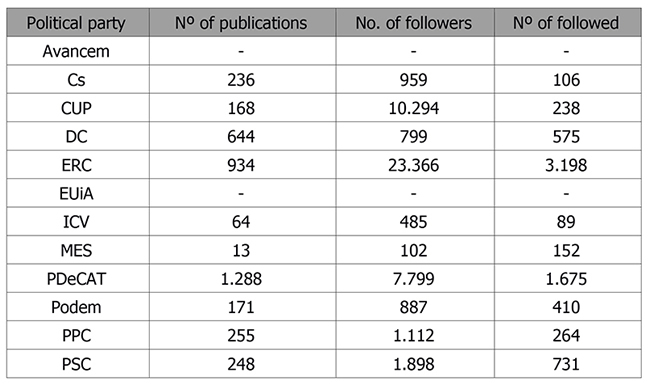
Fuente: elaboración propia.
As we have indicated previously, 10 out of the 12 political parties indicated in Table 1 have a profile on the social network Instagram, whereas Avancem and Esquerra Unida i Alternativa do not have it. On the other hand, we remember that Iniciativa per Catalunya Verds and the Moviment d’Esquerres have their accounts out of date, so we only show them on this table, but we will not comment them. The Partit Demòcrata Europeu Catalá is the group that registers the largest number of publications (1,288), followed by Esquerra Republicana de Catalunya (934) and Demòcrates de Catalunya (644). The rest of the political parties have a smaller number of publications. By order of greater to lesser importance, they are the following: Popular Party of Catalonia (255), Party of the Socialists of Catalonia (248), Citizens (236), Podemos (171) and Popular Unity Candidacy (168). As for the followers, ERC is the group that has a largest number of them (23,366), while the CUP, with 10,294 followers, and the PDeCAT, with 7,799, follow in relevance. For its part, Demòcrates de Catalunya has the smallest number of followers among the updated profiles, specifically 799.
And the number of followed, which is directly selected by the political groups themselves, depends on the choice or criteria of those groups, the community manager or the agency in charge of those accounts. Thus, for example, Esquerra Republicana de Catalunya has a larger number of followers (3,198) than the rest of the groups, followed by the Partit Demòcrata Europeu Catalá (1,675) and the Party of the Socialists of Catalonia (731). At the opposite end of the profiles with update is Citizens, with 106 followed. With all this, first we can say that the number of publications has no direct link to the number of followers and followed, although it is true that a larger number of entries and greater update give the possibility of having more followers.
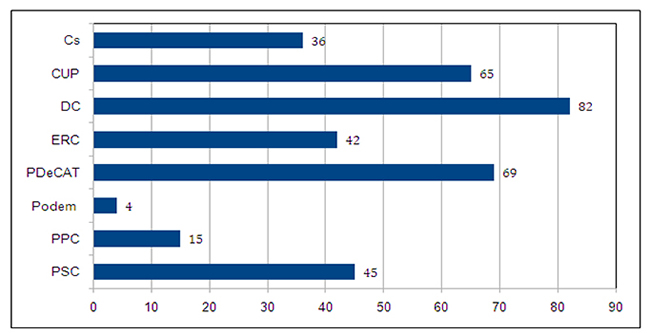
Graph 1: Number of publications. Source: own made by the author.
From September 6 to October 27, 2017, our analysis includes a total of 358 publications in the profiles of the Catalan political parties on Instagram, Demòcrates de Catalunya being at the top according to the previous graph. Specifically, there are 82 entries of this group in its Instagram profile during the period under study. Next in importance are the PDeCAT and the Popular Unity Candidacy, with 69 and 65 publications, respectively. Subsequently, the PSC has 45 entries, ERC (42), Citizens (36), the PPC (15) and, finally, Podemos, with four publications.
With this simple classification, we can see the importance of the referendum in Instagram entries for political parties of an independence and nationalist nature, which are the most published in this regard.
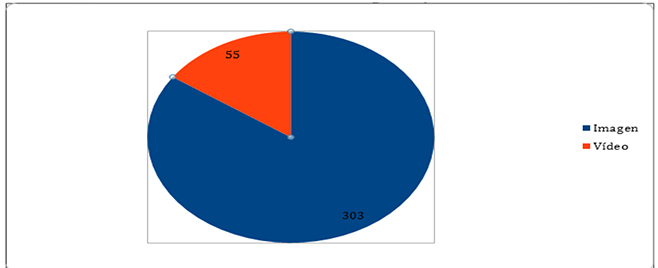
Graph 2: Number of images and videos. Source: made by the author.
Regarding the use of resources in Instagram publications during the selected period, political parties use the photographic image in 84.6% of the cases, while the remaining 15.4% are videos. All the groups make greater use of the image with respect to the video, a typology that does not appear in the selected sample in the case of Podemos.
DC is the political group that more images uploads to Instagram (72). It is followed by CUP (64), PDeCAT (51), Cs (34), ERC and PSC (32), PPC (14) and Podemos (4). On the other hand, the Partit Demòcrata Europeu Catalá and the Party of the Socialists of Catalonia stand out in the use of video, with 18 and 13 videos, respectively. Demòcrates de Catalunya and Esquerra Republicana de Catalunya include 10 videos in their publications, each one of them, while Citizens registers two videos, and the PPC and the CUP only do so in one case.
On the other hand, our analysis shows that almost all registered publications have a small text, with the exception of three entries published by the Popular Unity Candidacy (image 1), Demòcrates de Catalunya and the PSC. In addition, most registered entries contain other resources that accompany them, such as tags or hashtags, as well as emoticons.
Source: https://www.instagram.com/cupnacional/?hl=en
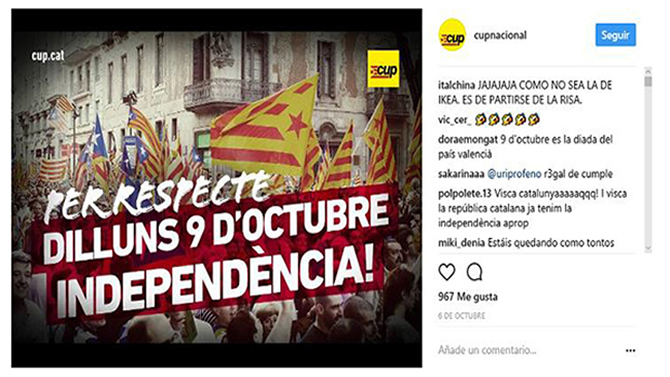
Image 1: CUP entry without text (October 6, 2017).
Used correctly, labels are a valid resource the purpose of which is to increase interactions, in this case in political parties, in addition to acting as a context to an event that is happening, as the referendum in Catalonia. Just follow a hashtag or look for it in a social network to find out what people, companies and organizations are sharing about this topic. If it is reproduced in abundance in other profiles, success is guaranteed. In our analysis, Podemos stands out in the use of labels, where all its publications have this element. Other groups that make good use of the labels, in percentage terms with respect to the total of their publications, are Demòcrates de Catalunya, in 80 out of its 82 entries; the Popular Unity Candidacy, in 60 out of its 65 publications; Esquerra Republicana de Catalunya, in 37 out of its 42 entries; the Partit Demòcrata Europeu Catalá, in 60 out of its 69 publications; the Popular Party of Catalonia, in 10 out of its 15 entries; the PSC, in 30 out of its 45 publications and, finally, Citizens, in 22 out of its 36 entries.
Regarding their use, some labels stand out such as #CatalanReferendum, #Democracy, # CATvotaSí, #HemVotat, #parlament, # SíAlMillorpaís, #votarem, # 1Oct, # RepúblicaARA, #LlibertatJordis, #sensepor, #MAMBO, #prepartit, # RecuperemElSeny, # RepúblicaCatalana, #JoVoto, # Independència, # HolaRepública, # SíVull, # VotaSí, #CatalunyaSomTots or #Conmigo Que noCuenten, among others.
Another resource that serves to make political organizations closer to Instagram is the emoticon, which in our research is considerably used by political parties, although not with the same impetus in all the groups. In this sense, many of these symbols refer to photo or video cameras, reproductions, faces, hands, buildings and ballot boxes, for example. The PDeCAT is the group that employs emoticons in a higher percentage as compared to publications that do not, in 67 out of its 69 entries, followed by DC (in 77 out of its 82 publications); Cs (in 31 out of its 36 entries); Podemos (in 3 out of its 4 publications); ERC (in 30 out of its 42 entries); the PPC (in one out of its 15 publications); the PSC (in 19 out of its 45 entries) and, finally, the CUP, with only three entries with this resource, out of the 65 that this leftist pro-independence group has.
Also present in our analysis, although minority and anecdotal, another resource is the use of links (hyperlinks). Three unique cases have been registered, in Citizens, Demòcrates de Catalunya and the Popular Unity Candidacy.
In the variable on elements and symbols used, we have also taken into account the possibility of geographical location of the publications. Almost all political parties use this resource during the period under review, except Demòcrates de Catalunya and the Popular Party of Catalonia. The group that makes a greater use of this resource is Esquerra Republicana de Catalunya, in 19 of its 42 entries. The PDeCAT uses geographic location in 22 out of its 69 publications, while Podemos does it in one out of its four entries, and Citizens on 6 occasions, out of a total of 36 publications. The PSC uses it in only 3 out of its 45 entries and, finally, the CUP, in only one out of the 65 published messages. With this, we see the lack of interest of the political parties to use this geolocation technique, with which they can position their publications and give them greater diffusion, as well as being a good utility for monitoring.
The following table shows the results obtained after analyzing the variables related to the satisfaction and involvement of users.
Table 4. Satisfaction and involvement of users
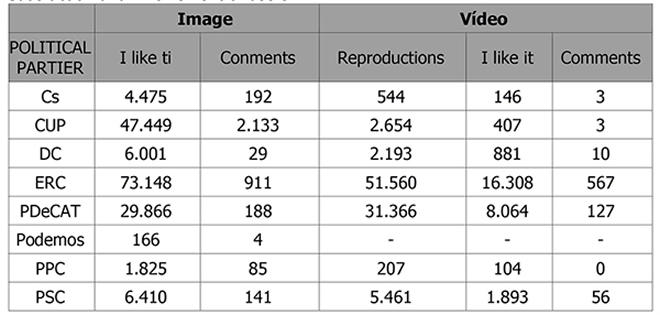
Source: https://www.instagram.com/esquerrarepublicana/
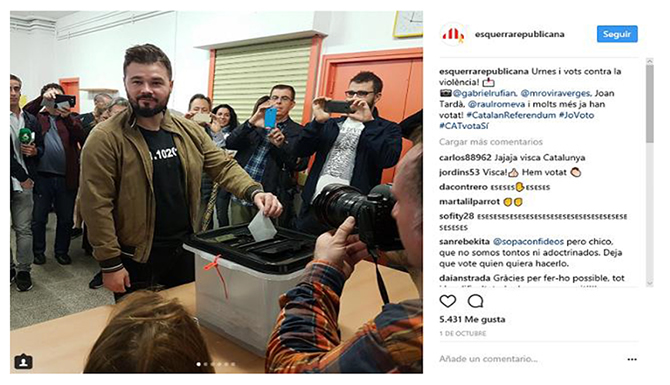
Image 2: Entry of ERC with more ‘I like it’ (October 1, 2017).
After verifying the importance of the image in the publications analyzed in Instagram, it is time to talk about the degree of popularity that they acquire in the accounts of the Catalan political parties. In general, ERC is the group that has a largest number of ‘I like it’ in its publications (73,148). Precisely, its most popular image was published on October 1, where you can see the time of the vote of Gabriel Rufián, a deputy of this political party to Congress (image 2). ERC is followed in importance by the CUP (47,449 ‘I like it’) and the PDeCAT (29,866 ‘I like it’). A lesser impact have the publications registered during the selected period in the PSC (6,410 ‘I like it’), DC (6,001 ‘I like it’), Cs (4,475 ‘I like it’), PPC (1,825 ‘I like it’) and Podemos (166 ‘I like it’).
Regarding satisfaction with the videos, publishing a larger number of these resources does not imply obtaining a larger number of ‹I like it› in our analysis, this situation depending rather on the number of followers and supporters, as well as the content and the quality of those videos. Esquerra Republicana de Catalunya, for example, has 16,308 ‘I like it’ in its 10 videos, while the 18 videos of the PDeCAT get 8,064 ‘I like it’ and the 13 videos of the PSC get 1,893 ‘I like it’. On the other hand, the 19 videos of Demócrates de Catalunya record a total of 881 ‘I like it’, followed later by the 407 ‘I like it’ of the only video published by the CUP, the 146 ‘I like it’ of the two videos of Citizens and, finally, the only video of the Popular Party of Catalonia, with 104 ‘I like it’. As we already expressed, Podemos does not publish any video in the period we analyzed.
Both for the photographic image and for the video, during the selected time all the accounts or profiles of the political parties have received comments from their followers on Instagram or from the public that moves on this social network. In this sense, the users that most participate and interact with the Catalan political groups are those of the CUP, with 2,136 comments, followed by the ERC, with 1,478 comments. Our analysis continues with the 315 comments received by the PDeCAT publications, the 197 comments for the PSC, the 195 comments for Citizens, the 85 comments for the PPC, the 39 comments for Demòcrates de Catalunya and, finally, the four comments that Podemos receives. .
This way, we can see that users, followers and the rest of the people who participate in the entries and profiles of the pro-independence parties do so in larger numbers and quantities with respect to the publications and accounts of the groups that did not support the referendum. However, we are struck by the particular case of Demòcrates de Catalunya, which, being the political group that registers the largest number of publications during the studied period, is, on the contrary, one of the groups that least comments received.
Finally, most of the political parties make mentions to people or self-mentions in the publications examined in their Instagram profiles, except the Candidature of Popular Unity and Podemos, which do not use them during the studied period. If we take into account the total number of publications of each political party, in percentage terms, Demòcrates de Catalunya is the group that makes most use of the mentions, in particular in 55 out of its 82 entries, followed by the Socialist Party of Catalonia (in 29 out of its 45 publications), ERC (in 24 out of its 42 entries), the PDeCAT (in 33 out of its 69 publications), the Popular Party of Catalonia (in 5 out of its 15 entries) and, finally, Citizens, in 10 out of the 36 publications of this group in Instagram.
Source: https://www.instagram.com/ciutadanscs/?hl=en
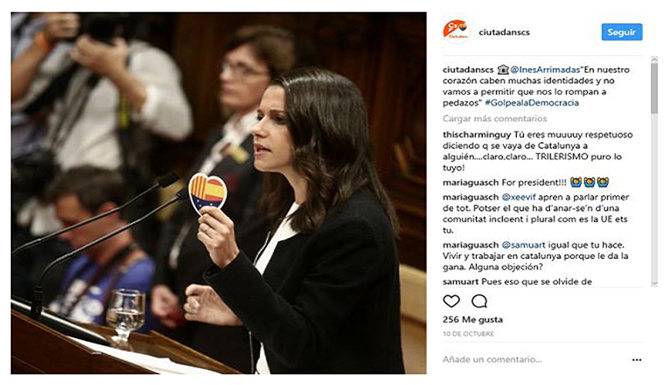
Image 3: Entry with mention of Citizens (October 10, 2017).
5. CONCLUSIONS
Through these lines we have seen, in broad strokes, how the political institutional communication of the parties present in the Parliament of Catalonia is, referring to the independence referendum of October 1, 2017, specifically in their publications on the social network Instagram, one of the fastest growing in recent years. The Catalan political groups have joined, mostly, to have a profile in said social network, although their use is unequal in each of them, with good cases of use and others that are not so. With their own communication strategies in social networks and others aligned, possibly, with the guidelines of the parent party.
During the time frame of our research, there is no global criterion in the political parties when publishing on Instagram, although it is true that the pro-independence groups use this social network more than those who are not in favor of the independence of Catalonia. This situation is visible, especially during October 1. In the days previous to the referendum, more entries were published than after this event, as most of the votes were previously requested and the Catalans were mobilized to participate in this meeting with the ballot boxes, while the number of publications subsequently decreased, once the electoral goal has been achieved, although the political parties continued to show up in this social network for or against the ephemeral Catalan republic.
On the other hand, taking into account the visual relevance of Instagram, political parties are especially committed to the use of photography instead of the video, these graphic resources being mostly accompanied by a considerable number of elements and symbols in their publications, such as labels (hashtags) and emoticons, although not always with the same impetus. In this sense, as we have seen, not all groups make a correct use of these elements, so they should work more to strategically integrate these symbols in their publications, not only with the aim of making these organizations closer to citizens but also to help better monitoring and achieve better results of online positioning . Even more worrisome is the low commitment to geolocation.
With respect to the popularity of the profiles and the participation of the public, both the followers of the accounts of the political parties on Instagram and the general public, three of the pro-independence groups (ERC, PDeCAT and CUP) are the ones that receive more ‹I like it› from the whole analyzed sample and, in addition, they have more reproductions in their videos and receive more comments , although the public›s interaction in this last point -comments- is both positive and negative for the political pro-independence organizations. In any case, they are parties that publish a large number of entries in the period we studied and, on the other hand, they are the groups that have a larger number of followers in this social network. The rest of the political parties, on the other hand, have more moderate results.
REFERENCES
1. Abejón P, Sastre A, Linares V (2012). Facebook y Twitter en campañas electorales en España. Anuario Electrónico de Estudios en Comunicación Social Disertaciones, 5(1):129-159. Recuperado de http://erevistas.saber.ula.ve/index.php/Disertaciones/article/view/3477
2. Begley S (2016, 18 de julio). See How the Hillary Clinton and Donald Trump Campaigns Use Instagram. Recuperado de http://time.com/4407195/hillary-clinton-donald-trump-instagram-campaigns/. Consultado el: 12/11/2017.
3. Berelson B (1952). Content analysis in communication research. New York: Free Press.
4. Bode L, Kajsa D (2016). Politics in 140 Characters or Less: Campaign Communication, Network Interaction, and Political Participation on Twitter. Journal of Political Marketing, 15(4):311-332. doi: 10.1080/15377857.2014.959686
5. Burson-Marsteller (2017). World Leaders on Instagram. Recuperado de http://www.burson-marsteller.com/what-we-do/our-thinking/world-leaders-on-instagram-2017/world-leaders-on-instagram-2017-full-study/.
6. Felipe VI (2017, 3 de octubre). Mensaje de Su Majestad el Rey. Recuperado de http://www.casareal.es/ES/Actividades/Paginas/actividades_discursos_detalle.aspx?data=5716.
7. Generalitat de Catalunya (2017, 6 de octubre). El Govern trasllada els resultats definitius del referèndum del’1 d’octubre al Parlament de Catalunya. Recuperado de http://premsa.gencat.cat/pres_fsvp/AppJava/notapremsavw/303541/ca/govern-trasllada-resultats-definitius-referendum-l1-doctubre-parlament-catalunya.do.
8. González G, Boiza F (2017, 1 de octubre). El Govern cambia las reglas y se salta su propia Ley del Referéndum. Recuperado de http://www.elmundo.es/cataluna/2017/10/01/59d08afee2704e42548b45b7.html.
9. Hendricks JA, Schill D (2017). The Social Media Election of 2016, en Denton-Jr RE (Ed.), The 2016 Us Presidential Campaign. Political Communication and Practice (121-159). Cham: Palgrave Macmilliam. doi: 10.1007/978-3-319-52599-0?
10. IAB (2017). Estudio anual de redes sociales. Recuperado de http://iabspain.es/wp-content/uploads/iab_estudioredessociales_2017_vreducida.pdf.
11. Instagram (s.f.). A quick walk through our history as a company. Recuperado de https://instagram-press.com/our-story/.
12. Levaux C (2017, 25 de noviembre). Puigdemont reta a la UE a respetar el resultado de próximas elecciones catalanas. Recuperado de https://es.reuters.com/article/topNews/idESKBN1DP0FF-OESTP.
13. López-García G (2016). ‘Nuevos’ y ‘viejos’ liderazgos: la campaña de las elecciones generales españolas de 2015 en Twitter. Communication & Society, 29(3):149-167.
14. Ludwig MD (2017). Getting the Picture: Issues and the 2016 Presidential Campaign on Instagram, en Baumgartner JC, Towner TL (Eds.), The Internet and the 2016 Presidential Campaign (pp. 285-307). Lanham: Lexington Books.
15. Mak A (2017, 8 de noviembre). Russia used Instagram to influence the 2016 presidential election – here are some of the posts. Recuperado de http://www.businessinsider.com/how-russia-used-instagram-to-influence-the-2016-presidential-election-2017-11.
16. Menéndez M (2017, 4 de octubre). Referéndum en Cataluña. ¿Qué ha pasado en Cataluña desde la consulta del 9-N? Recuperado de http://www.rtve.es/noticias/20171004/pasado-cataluna-desde-consulta-del-9-hasta-del-1/1583644.shtml
17. Nuntium Comunicación y Marketing (2017, 30 de enero). Redes sociales de fotografía: Instagram VS Pinterest. Recuperado de https://www.nuntiumcomunicacion.com/2017/01/30/redes-sociales-de-fotografia-instagram-vs-pinterest/
18. Pérez C (2017, 2 de octubre). Bruselas subraya que el referéndum es ilegal, pero pide diálogo y dice que “la violencia nunca puede ser instrumento político”. Recuperado de https://politica.elpais.com/politica/2017/10/02/actualidad/1506937906_525344.html
19. Quevedo-Redondo R, Portalés-Oliva M (2017). Imagen y comunicación política en Instagram. Celebrificación de los candidatos a la presidencia del Gobierno. El Profesional de la Información, 26(5):916-927. doi: 10.3145/epi.2017.sep.13
20. Schwarz H (2015, 6 de enero). 2016 may yet be the first ‘Instagram election’. Recuperado de https://www.washingtonpost.com/news/post-politics/wp/2015/01/06/2016-may-yet-be-the-first-instagram-election/?utm_term=.2f92ba3fb561
21. Selva-Ruiz D, Caro-Castaño L (2017). Uso de Instagram como medio de comunicación política por parte de los diputados españoles: la estrategia de humanización en la “vieja” y la “nueva” política. El Profesional de la Información, 26 (5):903-915. doi: 10.3145/epi.2017.sep.12
22. Serrano, Á. (2016, 11 de abril). Hashtags de Instagram: herramientas para analizar y monitorizar. Recuperado de http://alexserrano.es/herramientas-analizar-hashtags-instagram/
23. Towner TL, Lego-Muñoz C (2017). Picture Perfect? The Role of Instagram in Issue Agenda Setting during the 2016 Presidental Primary Campaign, en Baumgartner JC, Towner TL (Eds.), The Internet and the 2016 Presidential Campaign (263-283). Lanham: Lexington Books.
24. We Are Social y Hootsuite (2017, 26 de enero). Digital in 2017. Southern Europe. Recuperado de http://www.slideshare.net/wearesocialsg/digital-in-2017-southern-europe.
25. Zugasti-Azagra R, Pérez-González J (2015). La interacción política en Twitter: el caso de @ppopular y @ahorapodemos durante la campaña para las Elecciones Europeas de 2014. Ámbitos, 28. Recuperado de http://institucional.us.es/ambitos/?p=1697
AUTHOR
Manuel Jesús Cartes Barroso
International Doctor in Communication from the University of Seville and Official Master of Arts in Corporate Communication (Universidad CEU San Pablo). He is currently a professor of the degrees in Journalism and Publicity and Public Relations at the European University Miguel de Cervantes (course 2017-18). He belongs to the Analysis and Information Technology Research Team of the University of Seville. He has participated in several research projects and has published several articles in journals and book chapters. In addition, he has attended more than a dozen congresses. His lines of research are: journalism, corporate communication, history of journalism and social networks.
0000-0003-1768-275X
https://www.researchgate.net/profile/Manuel_Cartes_Barroso
http://independent.academia.edu/ManuelJesúsCartesBarroso
https://scholar.google.com/citations?user=tKx1qv8AAAAJ&hl=en